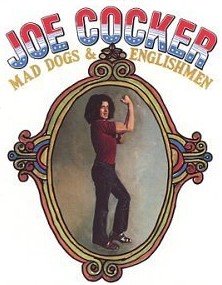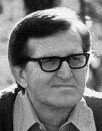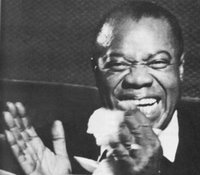
A first cousin of Shelley Pinz emailed last week to tell me more about the New York songwriter, poet and psychotherapist, born in 1944, who died last year.
As a songwriter Shelley Pinz is probably best known for the Lemon Pipers' 1968 hit
Green Tambourine, written with her frequent collaborator Paul Leka. They wrote some follow-ups in a similar vein, including
Rice Is Nice,
Jelly Jungle (Of Orange Marmalade) and
Pink Lemonade. This was was when Pinz and Leka were writing pop songs for Buddah, the Kama Sutra label's spin-off, and they continued writing together into the 70s.
In Australia, two other Shelley Pinz songs surfaced through local cover versions in 1968. She and Paul Leka also wrote
You Are The One I Love, originally by Adam's Apples [
listen], covered here by The Groove, and she co-wrote
Happy Without You (this time with Kenny Laguna), originally by The Sound Judgment [
listen] but remembered in Australia as a classic oldie by The Strangers. Both songs charted in Melbourne - the base city of both bands - and in Brisbane.
As Rochelle Pinz (using her full given name), Shelley Pinz was a psychotherapist specialising in the use of music, art and poetry. She held a Masters degree in social work, and in the late 90s she published a volume of poetry and lyrics,
Courage to Think. WoodstockLive has
some notes about this (although the audio link didn't work for me).
The best account I’ve found about Shelley Pinz the songwriter is
in her own words from 1999 at StocksandNews.com (archived page), where she recalls how she got into the business while she was still a poetry-writing college student.
She tells about the inspiration for
Green Tambourine, just before meeting with Paul Leka in the Brill Building precinct of New York:
In early Spring, 1966, while standing in front of the Brill Building I watched a man holding a tambourine begging for money. I wrote a poem about him and called the poem, 'Green Tambourine.' I added it to my lyric collection…. Sometimes I wonder what happened to the man in front of the Brill Building, holding a tambourine begging for money. I remember writing the lyric, ‘watch the jingle jangle start to shine, reflections of the music that is mine. When you toss a coin you'll hear it sing. Now listen while I play my Green Tambourine’ as if it were yesterday..; in the 60s, on the streets between Seventh Avenue and Broadway there was a magic one could only imagine.
Green Tambourine was a worldwide hit (#1 USA, Top 10 UK & Australia, #3 NZ), but
Happy Without You and
You Are The One I Love would be better known in Australia than in the US. The American originals are obscurities, although the Adam's Apples recording of
You Are The One I Love has been given new currency by the Northern Soul movement.
Shelley Pinz is
listed at BMI under four variations of her given name: Rochelle, Shelley, Shelly and Chele, but ‘Shelley’ seems to be the preferred spelling as a songwriting credit.
Update 7 March 2020:
Essential reading!
JCM, another friend of Rochelle 'Shelley' Pinz, has emailed his memories of her:
❝ I was in my mid teens in Atlantic beach when i and a friend met 'Shelley' ..we would shovel her snow & she'd invite us in and make us herbal tea. Some days, we'd stop by & say hello, she'd make us tea.. we were kids...to me, why not? I came from an abusive home and was out on streets most days/nights alone...i had music in my blood from early on and was just getting really into guitar and sound engineering (i was head audio visual student tech in hs by this time). She had even showed me her early patent designs for some really innovative electronic musical devices/interfaces way before they came into what we would probably refer to today as our DAWs. She was ahead of her time too. On some occasions, i'd go knock on her door during the day or even evening and she would invite me in and she knew i loved music and had ambitions and she'd let me noodle on her guitar and piano and we'd talk music and my dreams of becoming a musician, songwriter, and have my own studio someday. Just for me, she took me out for a surprise one night; i mustve been 17ish... i wont lie, she was the most BEAUTIFUL woman i ever saw ..secret crush on her i always had! She had the warmest face, the loveliest smile; i can still see it. Oh, the surprise, she took me to my first REAL recording studio! I was floored! I got the bug! Another time, we went to a friend of hers in the west end of long beach who had a recording studio...she told me to bring my guitar, which was an ovation deacon/breadwinner that i still have and play. I played as best i could then on a song part and left it at that. I was a nervous wreck then and didnt know nothing but loud and distortion. I have many fond memories of her; she asked to call her Rochelle. rather than her professional name(s). I know she had pictures of me shoveling her snow and some other in warmer times. i moved out on my own at 19 and sadly lost touch. When i finally did try and find her, i think she had moved by that point in time. As i grew up, becoming an audio visual engineer, sound engineer, multi instrumentalist, leader of my own long island hard rock band, i tried to find Rochelle. To no avail. Gave up looking. Then my day job was a computer engineer and the internet and this thing called a search engine came into being! Some time later, still involved with music, i looked for Rochelle again; this time, I succeeded, but sadly, the reply i got was that she had passed on. I CRIED.. she was SO KIND to me. Those years earlier, she told me what she saw, to keep going and never give up. I never gave up. I went searching for her to thank her, to show her what I became. Now with my own recording studio and putting out my own music. During a recent mixing/mastering session on a song, one that i put everything into, i dont know why, but at some final moment of working on this song, at the end of it, in a brief spot at the end, i just blurted out, in song voice, jubilantly, 'I DID IT'. It stayed in the recording. When that moment happened, I couldnt help but think of how proud Rochelle would have been to see what became of me. the song has nothing to do with her or about her; its actually a warewolf song. But i was so proud of hearing it when it was finished that i put in the songs liner notes, 'For R.Pinz, thank you'. I wish i could thank her, see her smile again, that beautiful glowing face. I'd blush like the teenage love struck boy i was in 1976/77. If I could, Id have said, 'Thank you Rochelle for inviting me into your home, inspiring me so much; I always wanted to let you know how much those little things you did musically for me set me on my musical journey. You never knew how important those times were to me; they were EVERYTHING.' I miss you. I wish i had a picture of her for my studio. If anyone ever comes here, if you have any pictures of her, please contact me. NO, i'm not a loon, she was very pivotal to my future and would like a picture of her for my studio wall because one should be hanging in it; I owe it to her memory.
Thank you Rochelle,
JCM ❞
Adam's Apples - You Are The One I Love.mp3
The Sound Judgment - Happy Without You.mp3
Label scan from Margaret G. Still, thank you.





















